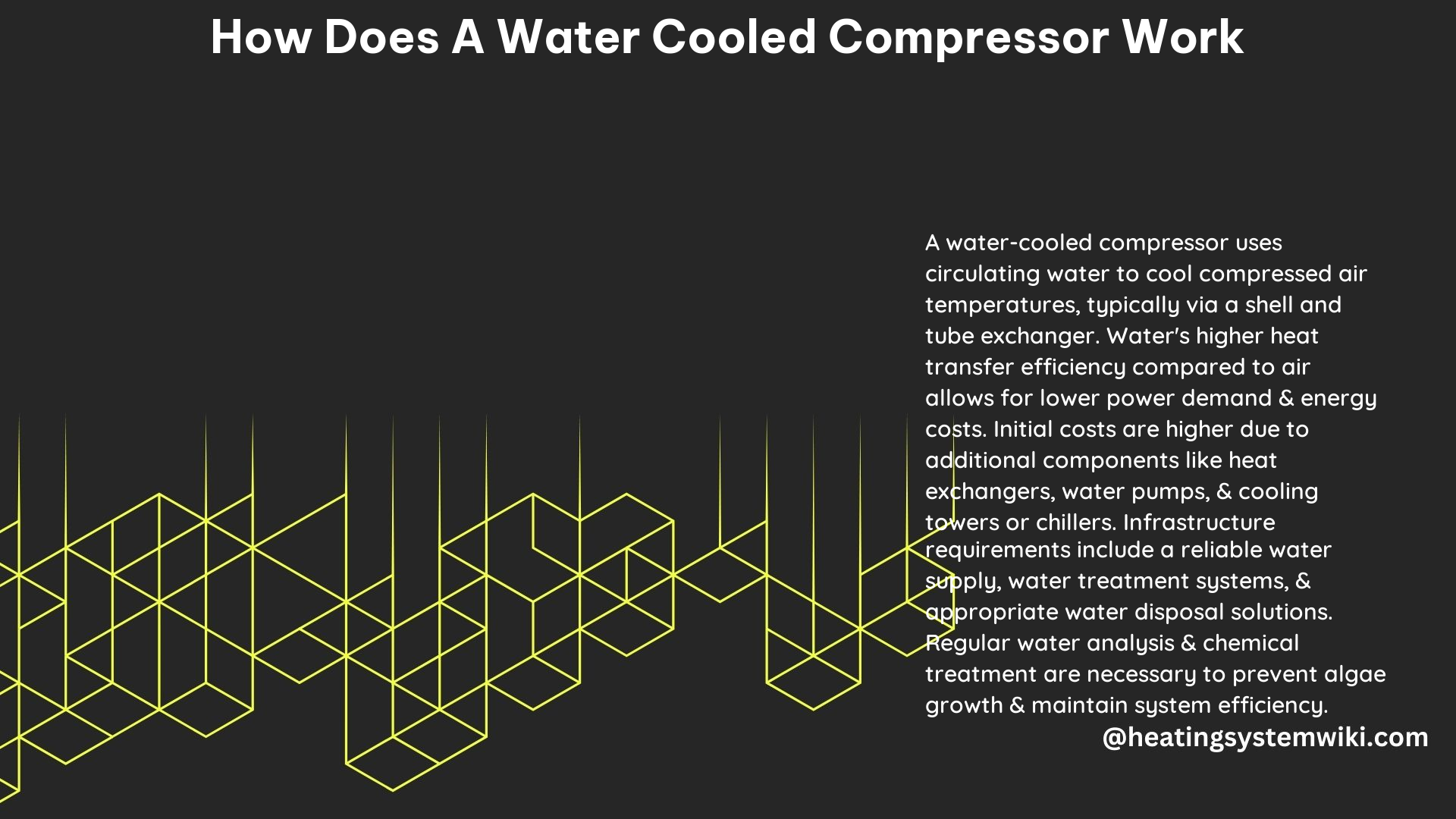A water-cooled compressor is a type of air compressor that uses liquid coolant, typically water or a glycol/water mix, to cool the compressed air. This cooling system is designed to improve the energy efficiency of the compressor by utilizing the superior heat transfer properties of water compared to air. However, the water-cooled system requires additional components, such as heat exchangers, water pumps, and cooling towers or chillers, which can increase the initial cost compared to air-cooled compressors.
Understanding the Three Main Types of Water-Cooled Compressor Systems
The water-cooled compressor system can be categorized into three main types based on the cooling method:
- Open Systems without Circulating Water
- Open Systems with Circulating Water
- Closed Systems with Circulating Water
Open Systems without Circulating Water
In this type of system, an external water source, such as municipal water mains, lakes, streams, or well water, is used to cool the compressed air. The water passes through the compressor and is then discharged. This system is relatively easy and inexpensive to install, but it can be costly to operate, especially if the cooling water comes from water mains.
Key Considerations:
– Water from lakes or streams is typically free, but it requires filtration and purification to limit the risk of clogging the cooling system.
– Water rich in lime can result in boiler scale forming inside the coolers, impairing the cooling capacity.
– Salt water can be used, but the system must be designed and dimensioned accordingly to handle the corrosive nature of the water.
Open Systems with Circulating Water
In this system, the cooling water from the compressor is re-cooled in an open cooling tower. Air is blown through a chamber, causing part of the water to evaporate and the remaining water to be cooled to 2°C below the ambient temperature. This system is primarily used when the availability of an external water supply is limited.
Key Considerations:
– The water gradually becomes contaminated by the surrounding air and may require regular analysis and chemical treatment to avoid algae growth.
– During the winter, when the compressor is not operating, it’s important to drain or heat the water to prevent freezing.
Closed Systems with Circulating Water
In this system, water continuously circulates between the compressor and an external heat exchanger. The heat exchanger is, in turn, cooled by either air or a secondary liquid coolant. This system is often used in applications where space is confined, the environment is caustic or dirty, or a high-quality cooling water supply is not available.
Key Advantages:
– The closed-loop design ensures a consistent and controlled cooling environment for the compressor.
– The system can be designed to operate in harsh or contaminated environments without the risk of water contamination.
– The use of a secondary cooling medium (air or liquid) provides additional flexibility in system design and installation.
Factors to Consider when Choosing between Air-Cooled and Water-Cooled Compressors

When selecting between air-cooled and water-cooled compressors, it’s essential to consider the following factors:
-
Energy Costs: Water-cooled compressors can offer energy savings due to the superior heat transfer properties of water compared to air. However, the additional components required, such as heat exchangers, water pumps, and cooling towers or chillers, can increase the overall energy consumption of the system.
-
System Requirements: The availability and quality of the water supply, as well as the space constraints and environmental conditions, can significantly impact the choice between air-cooled and water-cooled compressors.
-
Application-Specific Needs: The specific requirements of the application, such as the required air flow, pressure, and duty cycle, can influence the selection of the appropriate cooling system.
Conclusion
Water-cooled compressors can provide energy-efficient cooling for compressed air systems, but they require a reliable water supply, water treatment systems, and appropriate water disposal solutions. The choice between air-cooled and water-cooled compressors should be based on a careful evaluation of the energy costs, system requirements, and the specific needs of the application.
References:
– Atlas Copco – Cooling System: Water-Cooled and Air-Cooled
– FS-Curtis – Air-Cooled vs. Water-Cooled Compressors
– Fluid Air Dynamics – Keeping Cool: Choosing an Air Compressor Cooling System
